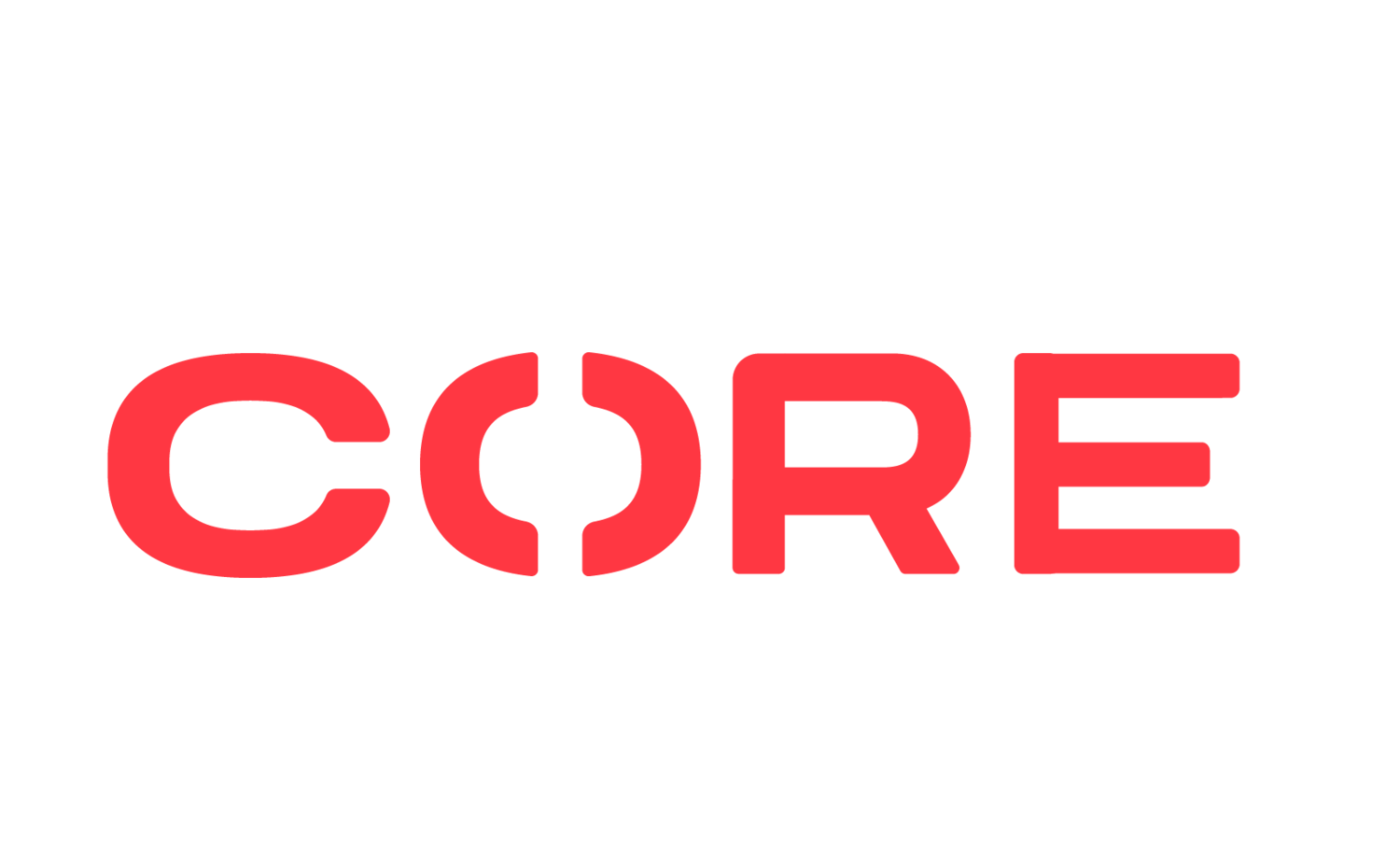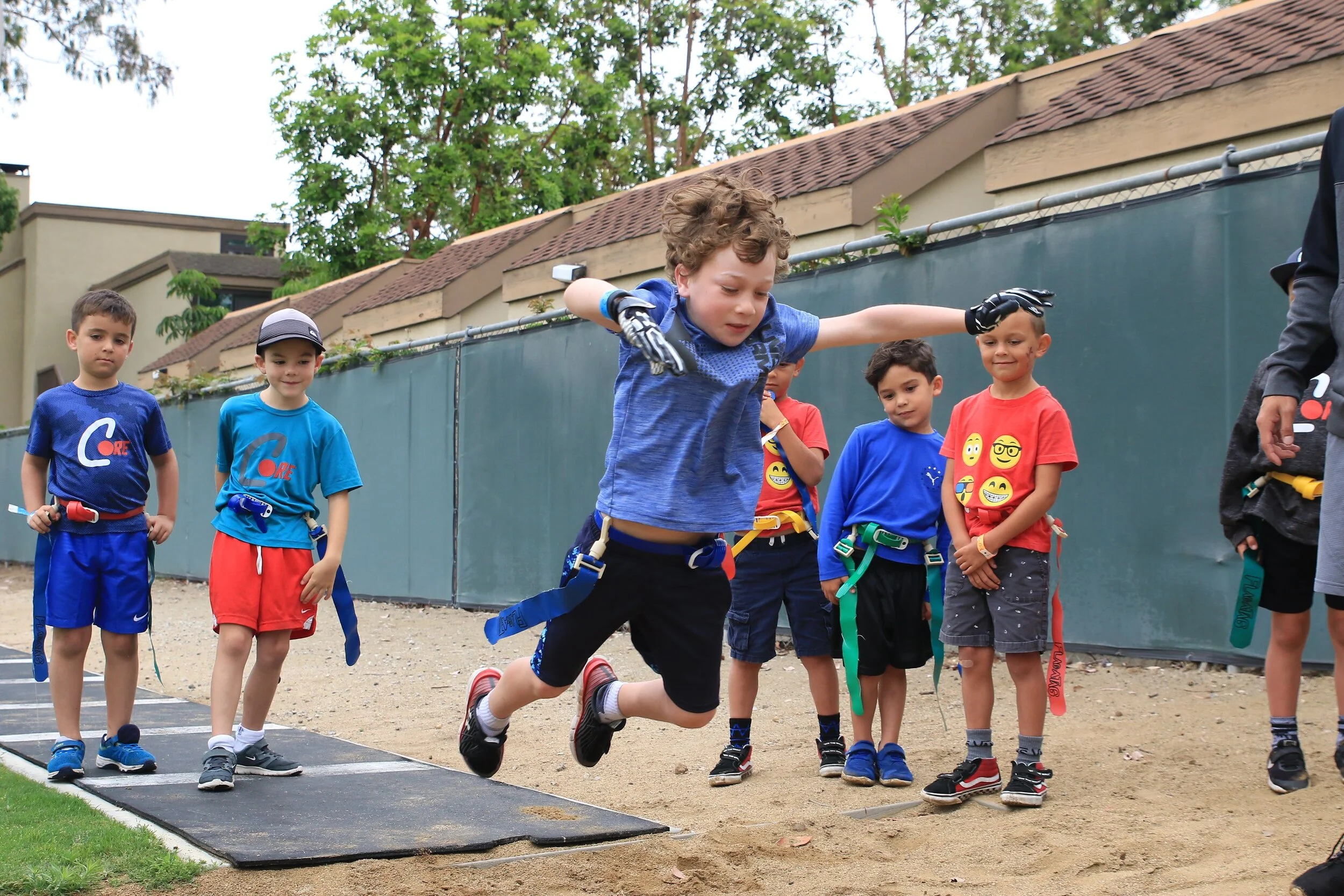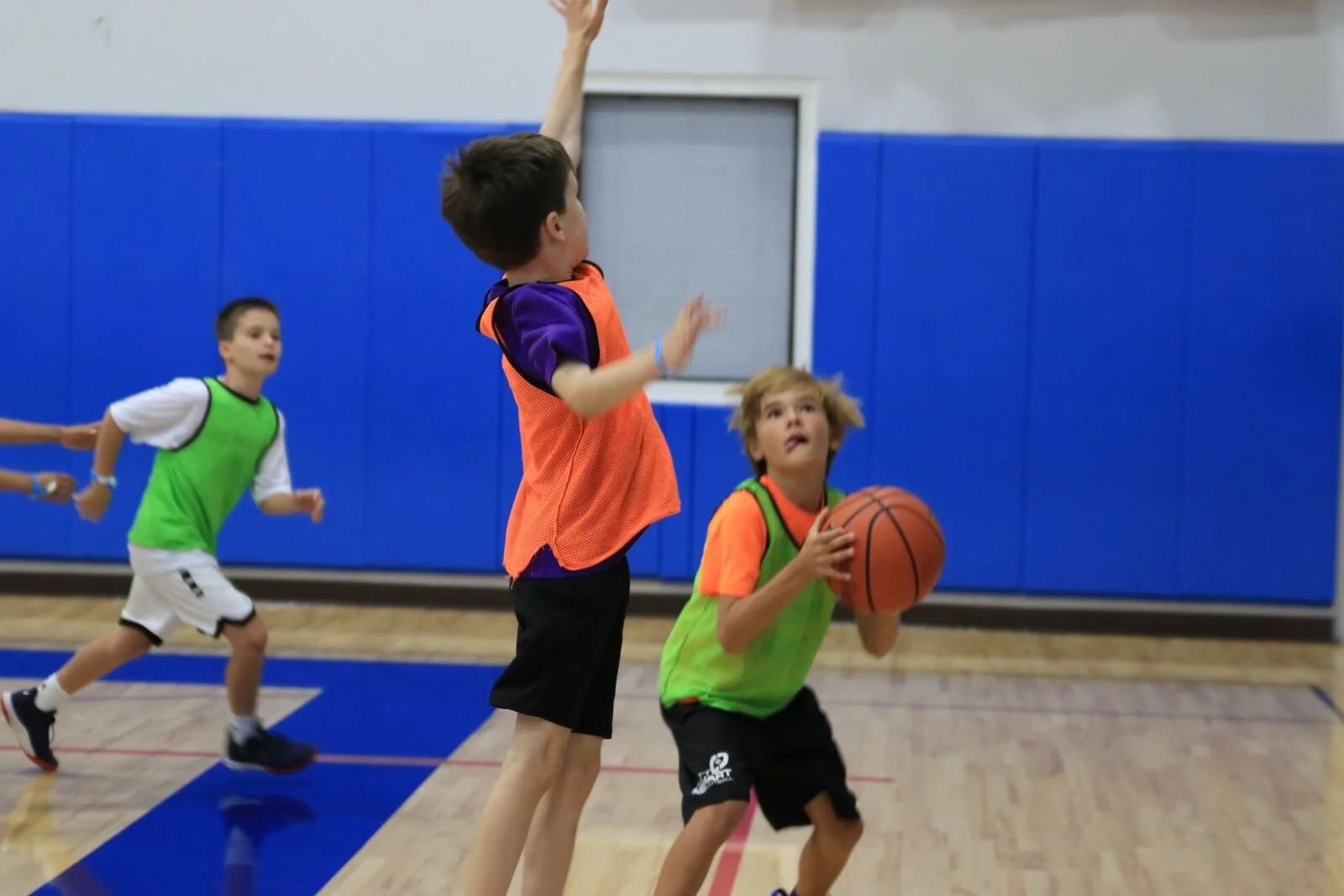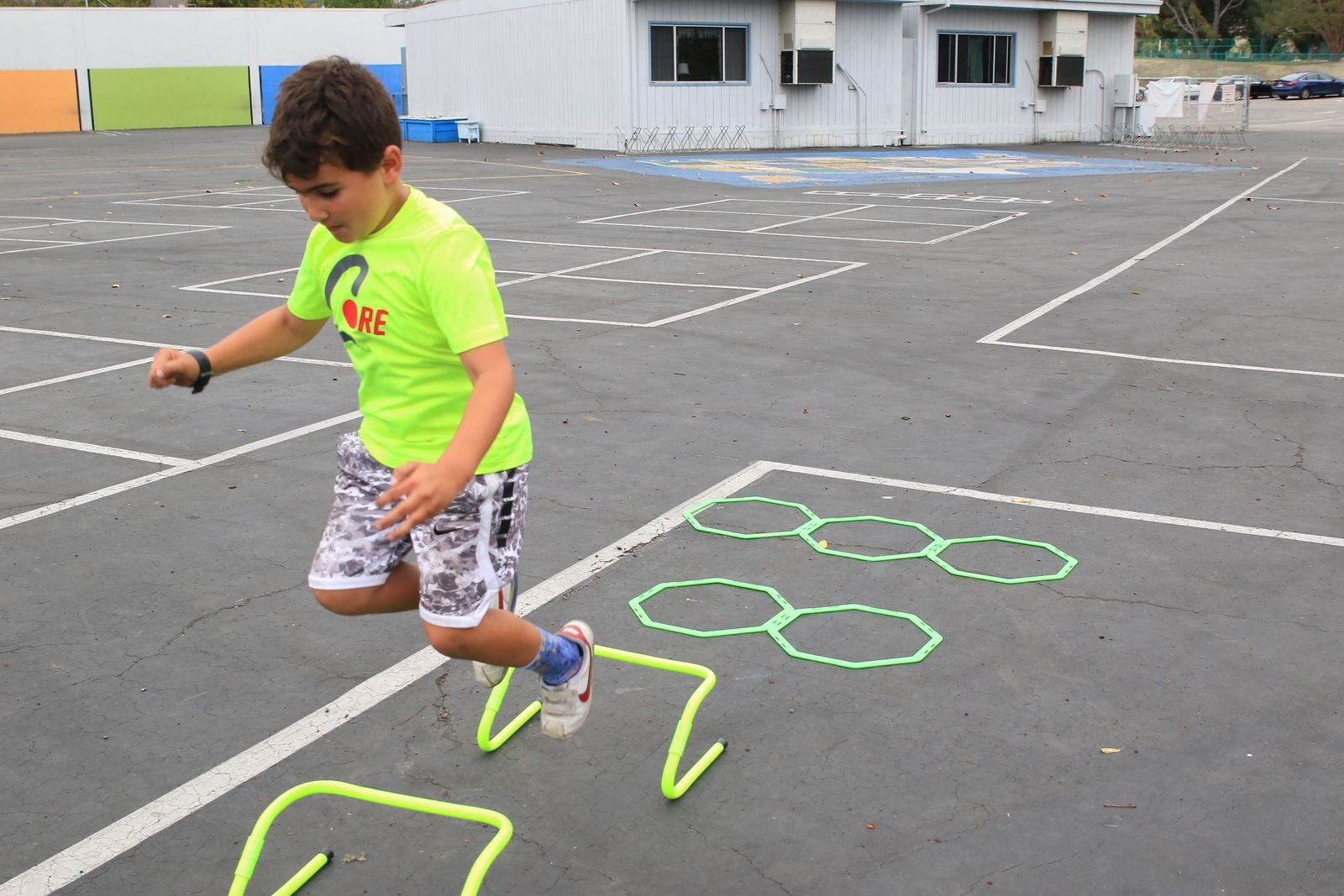Improve Sports Skills & Game Performance with Dynamic Movement Drills
Diagonal movement, lateral movement, linear movement. You have heard these terms in sports before, but do you know what they mean or why they are important? These are all forms of Dynamic Movements--active movements, either singular (like arm swings) or a series (like karaokes) of movements, that require continual motion at the joint or muscle’s full range. Dynamic movements are found in all sports, and perfecting them is often the difference between an average athlete and an all-star. So, go grab your athlete and let’s dive deeper!
What is a Dynamic Movement?
A dynamic movement is the way we move from one location to another using our body and muscles¹. A dynamic movement can include one of or a combination of the following directional movements:
Lateral movement: side-to-side (left to right) ←→
Linear movement: forward or backward ↕
Diagonal movement: both linear and lateral at the same time ↖↗↘↙
Rotational movement: turns the body to face a different direction↺↻↩↪
We often execute dynamic movements throughout the day without realizing it. In sports, these movements are much more deliberate. Running, shuffling, jumping, skipping, turning, sliding, diving and juking are all examples of common dynamic movements found in many sports.
Why are Dynamic Movements Important?
Skillfully executing dynamic movements improves our footwork and body control which helps us accomplish our athletic tasks. Let’s put a few of these in context:
Running is a linear movement that allows us to catch up to an opponent
Shuffling is a lateral movement that allows us to follow an opponent across the field
Juking is a diagonal movement that allows us to get open to receive a pass from a teammate
Turning before shooting is a rotational movement that allows us to take a clear shot
Diving for a ball is a series of dynamic movements that involves linear, lateral, diagonal, and rotational movement that allows us to catch and throw the ball in continual motion
Dynamic movements improve our footwork, body control, body awareness and balance while also developing agility and endurance, all of which make us a stronger athlete. Frequently practicing dynamic movement patterns the same way we practice taking shots on goal helps us improve our overall athleticism, play better in our sports and perform better in games. Great athletes have both strong sport-specific skills (shooting, dribbling, passing, throwing and catching) and strong general sport skills that are developed through practicing dynamic movements.
Vocab Check!
Match the following words to the direction of the movement. Then, write an example of how you might use each movement in your sport!
Diagonal Movement ←→
Lateral Movement ↕
Rotation ↖↗↘↙
Linear Movement ↺↻↩↪
3 Ways to Practice Dynamic Movements at Home
1. Dynamic Stretching. Before we play hard, it is important to activate our muscles that are not yet awake and ready for action. Dynamic stretching, also known as plyometric stretching, involves exercises like jogging, shuffling, jumping, and skipping. These activities warm our muscles to their “working temperature”, prepare our bodies for more difficult movements, and protect us from injury². Dynamic stretching is different from static stretching, which involves holding a position for an extended period of time to release muscle fibers and increase range of motion. Dynamic stretching involves continual movement which helps us improve overall function and performance³! Before you start a tough workout or practice, make sure to prepare your muscles by spending 5-10 minutes on dynamic stretches. Measure out about 10 ft of space and go back and forth completing the above-mentioned exercises. Remember, this activity is to warm up your body not tire you out!
2. Change of Direction Juke Drill. Once your body is warmed up, you are ready to take it to the next level. Juke drill is a great way to practice dynamic movements that you would execute in your sport. Line up objects with about 5-8 feet of space between each one.Run towards the object.When you are close, pretend you are going to run to one direction, then quickly change directions and go around the other side. The key here is to fake that you are going one way and use your lateral change of direction to get around the object. Up for a challenge? Make a game out of Juke Drill! Grab your friends, siblings or parents. Each person stands in a line 5-8 ft apart with their feet planted. Run towards your lineup and juke around them. The people in line try to tag the runner. Juke your friends to get to the end without being tagged!
3. Reaction Game. Sports are mostly unpredictable! That’s what makes them so exciting and fun to play. Our performance is dependent on the skills we practice and develop, our opponent’s actions, and the way we react to the play. The better we read a play and the quicker we react, the greater chance we have of beating our opponent. Try this reaction game with a friend as the “Caller” while you react as the “Player”, then switch places and challenge them!Find a play space with lots of room to runThe Player starts in the middle of the space. The Caller gives different commands for the Player to complete, such as: left, right, back, forward, right turn, and left turn. Once you hear the command, quickly take 5 steps/run in that direction. If you hear right or left turn, then jump to turn your body to face the left or right. See how quickly you can react to the command and complete your run or jump!
For more Dynamic Movement drills and games, check out the CORE YouTube Channel.
Dynamic movements are a key factor of athletic success. Our ability to react to a moving play by quickly changing direction and executing our task will impact how we perform in sports and athletics. Make sure to set a weekly practice schedule for dynamic movements so you can increase your overall athleticism and be on top of your game!
By Rachel Hoeft, M.A., Director of Program Development, CORE Athletic Training
Rachel is the Director of Program Development at CORE Athletic Training. Rachel has completed her Bachelor’s Degree in Sport Psychology & Leadership and Master’s Degree in Sport & Exercise Psychology. Rachel is currently completing her Doctorate in Sport & Performance Psychology. Her education in sport psychology and many years of competitive athletics help her work with athletes to identify and resolve many common issues that impact athletic performance and everyday life. Learn more and follow Rachel o Instagram @rhoeftspc.
References
Locomotion Athletes (2017). Why you need dynamic movement! Locomotionathletics.com. Retrieved from https://locomotionathletics.com/dynamic-movement/
Gleim, G. W., & McHugh, M. P. (1997). Flexibility and its effects on sports injury and performance. Sports medicine, 24(5), 289-299.
McMillian, D. J., Moore, J. H., Hatler, B. S., & Taylor, D. C. (2006). Dynamic vs. static-stretching warm up: the effect on power and agility performance. The Journal of Strength & Conditioning Research, 20(3), 492-499.




